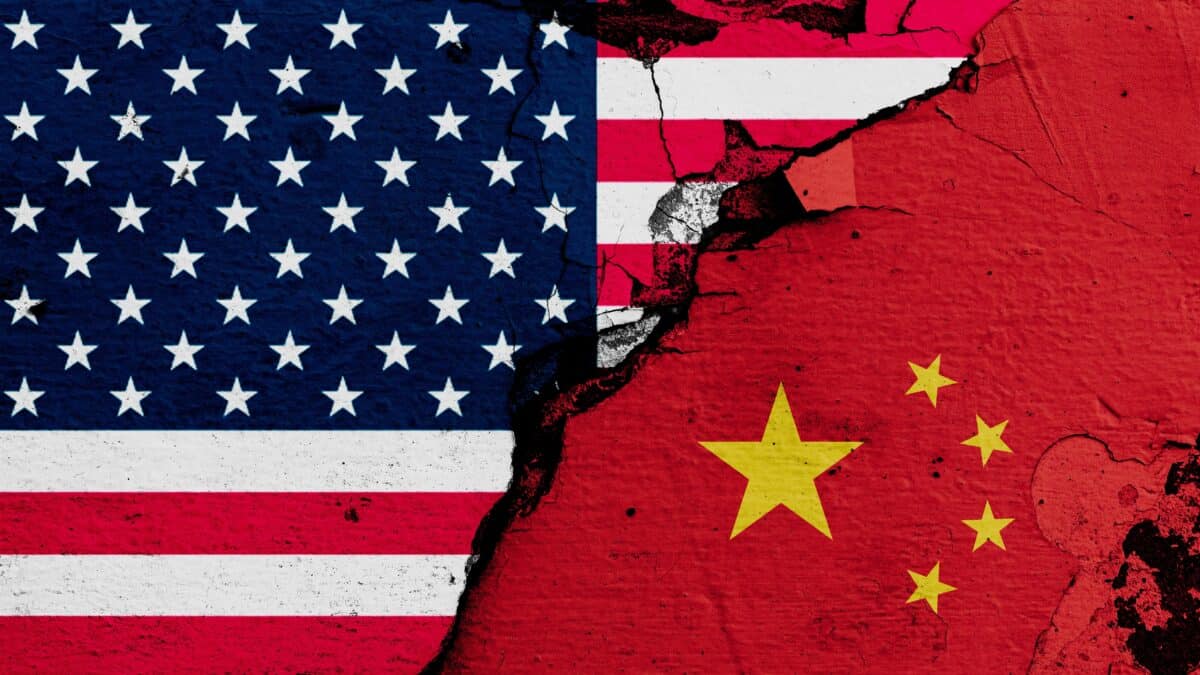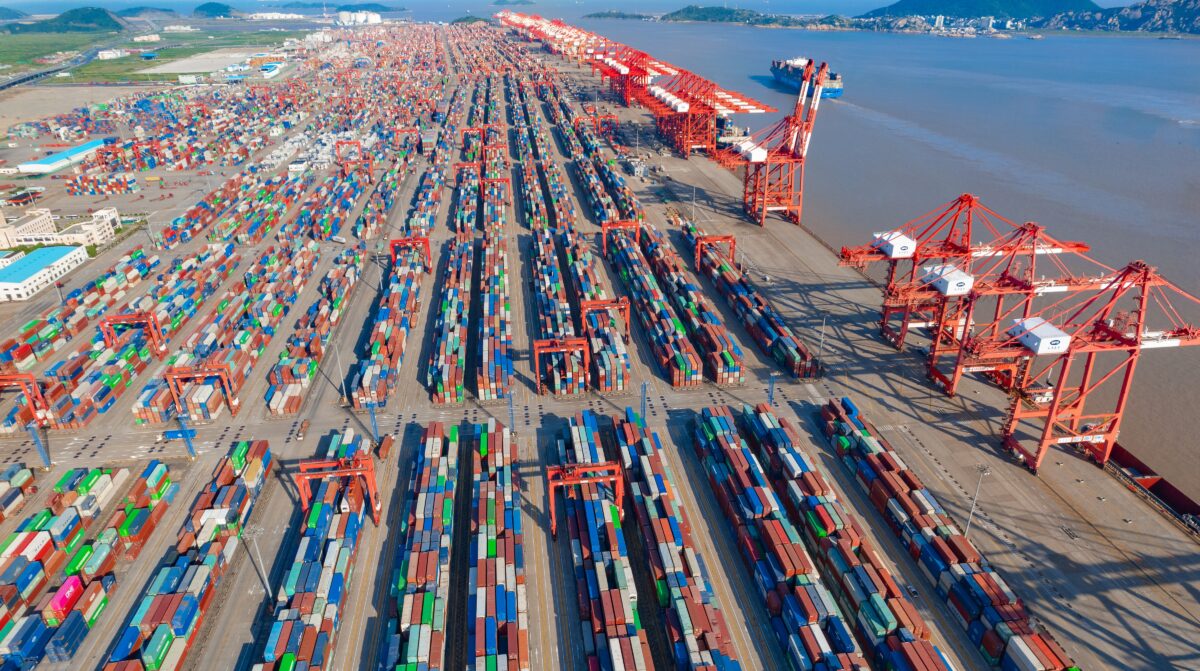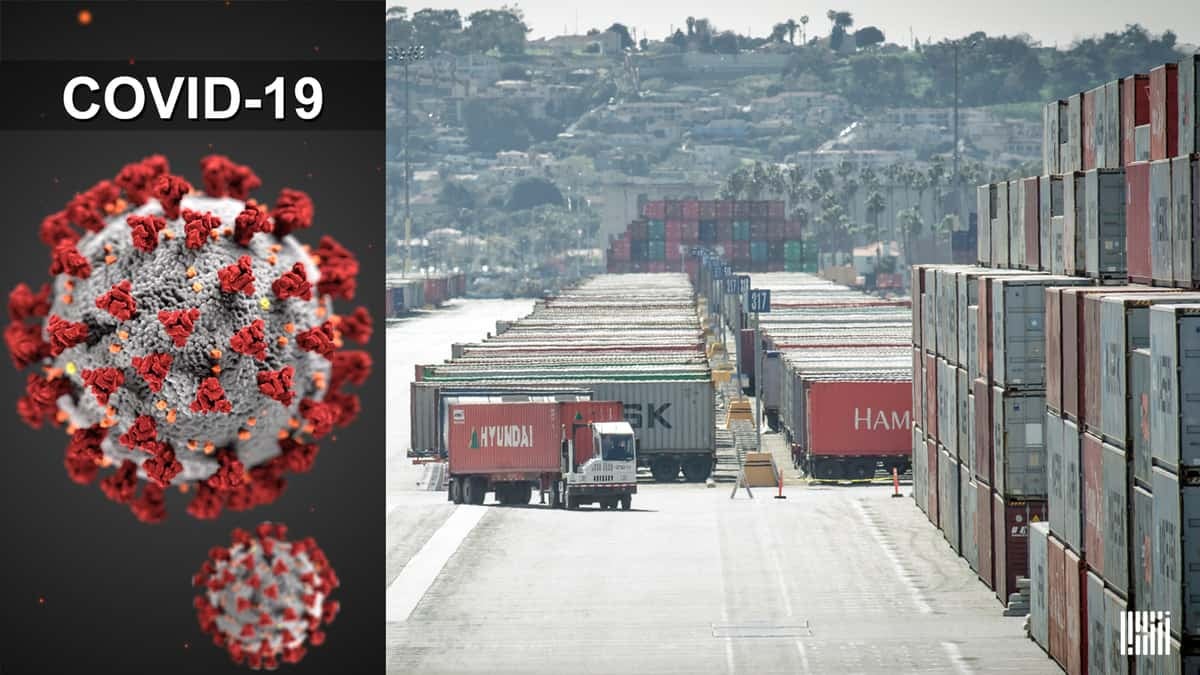What happens in China doesn’t stay in China. And for American supply chains, that is usually a good thing. American businesses have become dependent on low-cost goods coming from Chinese suppliers. But in a post-COVID world that may be entering the Second Cold War, reliance on China means that American businesses are held hostage by an autocratic regime that seems oblivious to the damage it is doing to its own economy, much less the global one.
Since the earliest days of COVID-19, China has practiced a zero-tolerance policy to prevent COVID from spreading amongst its population. After the initial onslaught of cases around Wuhan and pockets throughout China, the government declared victory and boasted about its superior method of containment compared to Western democracies.

(Image: Shutterstock)
This draconian approach had merits in the earliest days, when the risks of the virus were unknown and there was a lack of understanding of how the virus spread. Two years later and billions of doses of vaccines that have allowed Western countries to open back up, a lockdown of any sort seems impractical and an aggressive overreach.
But China has locked down two of its three largest cities: Shanghai, a global financial center and the Chinese equivalent of New York City; and Guangzhou, a massive manufacturing and distribution city. Both are home to some of the world’s largest ports – Shanghai’s port is the largest in the world and Guangzhou is the fourth-largest. Combined, the two port cities handle nearly three times the amount of cargo that the entire U.S. imports each year.
Lockdowns Chinese-style
The Chinese version of lockdowns are far more oppressive than the most extreme Western version. In China, if you are subject to a lockdown, you can be forbidden from leaving your home for anything. No groceries, no food – absolutely nothing.

There are even reports that if you do become sick, you must suffer alone without medical care, no matter how dire your condition is. Basically, Chinese people are completely barricaded and held prisoners in their own home. If you leave, you are subject to arrest and the most egregious penalties that only an authoritarian regime can impose.
And since the diet of most Chinese is far less dependent on processed foods than the American version, the food supply chain is far more vulnerable to disruptions. The Chinese eat far more fresh produce and meat than Americans and lack the cold chain network that is the backbone of the American grocery system. The Chinese get the majority of their meat and produce at wet markets, which are incredibly vulnerable to supply disruptions.
The other feature of the Chinese lockdowns is that they cripple entire industries. The Chinese government won’t allow workers or truck drivers to move throughout the affected areas. Therefore, the Chinese lockdowns prevent people from getting to work in factories and goods from being hauled from the factories to the ports. Put simply, any city subject to a lockdown is nearly offline.
The lockdowns in Shanghai began on April 2, and the Guangzhou lockdowns began on April 11. According to a report in Reuters, at least 373 million people – who contribute 40% of China’s GDP – have been affected. This is roughly the equivalent of removing the combined economies of Japan and Mexico from the global economy.
There will be a surge of containers from China when it restarts its economy, but no one knows when this will happen, how long it will take, and how backed up the domestic supply chains are. For now, we know the freight market is slowing and China is only making things worse.
Container volumes out of China have dropped 31% since April 6th
FreightWaves estimates that Chinese imports currently represent at least 16% of all U.S. trucking volumes.
According to SONAR, container volumes out of Chinese ports began to drop on April 6th and as of April 15th, have declined by more than 31%. This slowdown in volume will impact the U.S. surface freight market as less volume of cargo enters U.S. trucking and intermodal networks.
The longer China stays offline, the greater the impact to U.S. supply chains. In addition to throttling Chinese production, lockdowns may harm U.S. domestic production and distribution. Inventories are at record highs, but they could burn off quickly, just as they did in 2020.
The bigger question is how screwed up China’s domestic supply chain will be. Factories in China depend on upstream producers, many located near the factories they serve and subject to the same lockdowns.
We also don’t know the situation for raw materials coming into the country
Freight networks are bidirectional, meaning that the ships waiting off the coasts of China contain some raw materials that are used in factory production. There are an estimated 300 containerships and 500 bulk ships off the coast of China, loaded with cargoes of everything from machinery parts, components to metal ore to grain. The commodities that are on these ships are used for domestic consumption, but also play a vital role in Chinese manufacturing supply chains.
How long will it take to offload and transport these raw materials? No one knows. And since China is opaque, we don’t have good data on the situation on the ground. The longer China remains in lockdown, the longer it will probably take to resume normal production cycles.
There are also a large number of empty containers bound for Chinese factories that are waiting for Chinese truckers to move them inland. Without the flow of empties, Chinese upstream factories can’t ship products to downstream manufacturers or for export.
The big difference between this lockdown and the one in February 2020 is that the rest of the world is open and won’t be tolerant of disruptions. Consumers won’t wait for products – especially when it comes to items that fall under discretionary spending. If products are delayed, consumers will just purchase alternative goods or nothing at all.

There will be demand destruction
Eventually, all of the pent-up orders will be shipped. If the process for ramping up shipping volumes happens quickly, then American ports will likely see a replay of last year’s shipping influx and backlog.
However, if the process takes longer, it could be worse for the economy, because it would erode supply chain forecasts and product orchestration.
This will have long-lasting impacts for decades to come.
Supply chain professionals are already looking for alternatives to China, and this process will accelerate. FreightWaves is seeing a surge in site selection freight modeling requests from supply chain organizations that want to move production closer.
Cost is only one consideration in choosing a production site. Dependability is often more important.
The cynics say North American reshoring will never happen due to cost. This was true for decades. But boardrooms are now prioritizing supply chains in ways they never have before.

Supply chain considerations have been elevated to strategic importance and leaders in supply chain organizations are gaining influence on corporate decision-making.
Lower carbon emissions, higher dependability, and shorter lead times mean that near- or on-shoring is more favorable now than widely dispersed global supply chains. It won’t happen overnight and not every industry will shift back, but it is happening and the most recent lockdowns are only going to accelerate this movement.
Interested in more data?
All of the data in this article is available through FreightWaves’ proprietary SONAR platform. SONAR is the world’s deepest and freshest supply chain intelligence platform. To learn more, sign up for a demo at: https://sonar.freightwaves.com/











